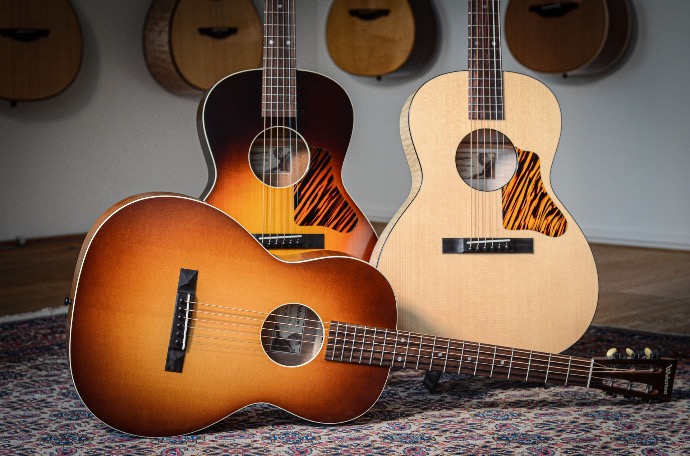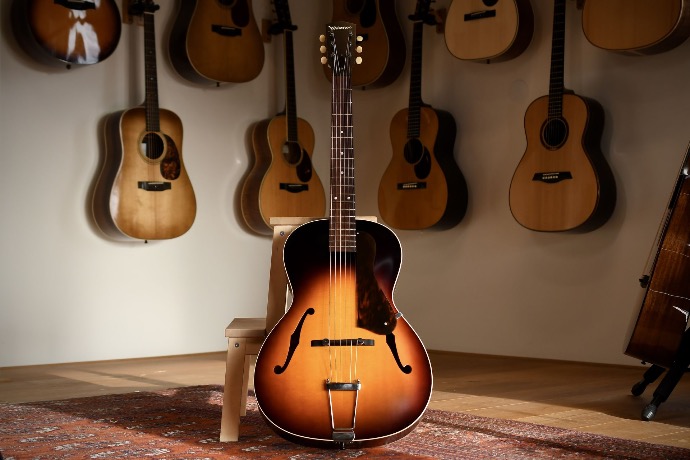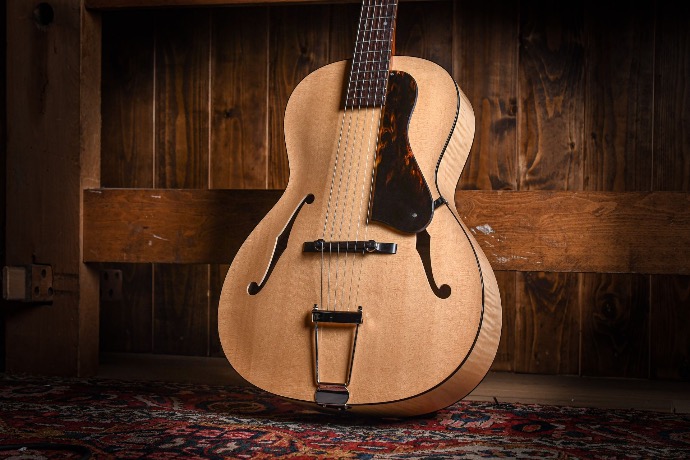The Early Years
Bill Collings was a pre-med student at Ohio University in the 1970’s when he realized that he was more interested in guitars and engineering than medicine and decided to quit and move to Houston, Texas. Not long after that he started building his first guitar and doing repairs for local guitarists. Lyle Lovett was a local guitarist who was a real supporter of Bill’s guitar building and really helped build his brand in Houston. More and more Texas players seeked out Bill for custom guitars, which resulted in him building about 50 guitars and a few banjos in Houston.
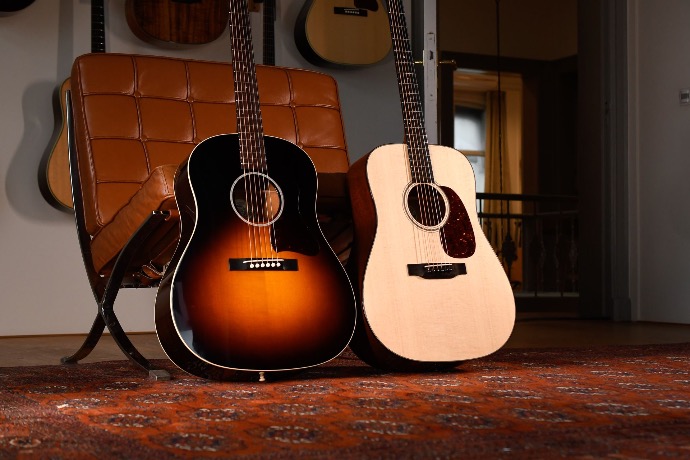
The First Impression in Austin
In the early 80’s he wanted to head west to continue his business in California. He decided to make a detour via Austin, and this is where he befriended luthier Tom Ellis. They became close friends and colleagues and Tom offered Bill to stay in Austin to share space in his workshop.
Tom Ellis, who is a master mandolin builder, once described their first meeting in an interview. He said that right after he offered Bill a place in his workshop, Bill accidentally knocked one of Tom’s finished mandolins of the wall with a piece of lumber after which Bill packed up his boxes and was ready to continue his journey to California. Luckily, Tom gave him another chance which turned out for the best as Collings Guitars found its footing in Austin and Bill and the company never left. And on top of that, the mandolin even survived the fall!
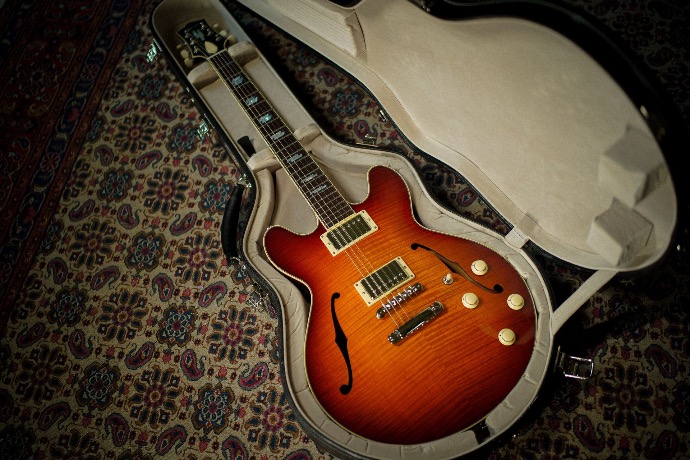
A Household Name in Boutique Guitar Building
Fast forward a few years and in the mid-80’s Bill had his own shop and was building flattop and arch top acoustic guitars. In 1989, he was contacted by George Gruhn of Gruhn Guitars in Nashville, one of Americas best known specialty guitar stores. He was asked to build 24 custom Gruhn guitars. This national exposure was a huge boost for the company and the demand for Bill’s guitars grew bigger and bigger.
Around the turn of the century, Collings Guitars was a household name in boutique guitar building. More and more famous artists ended up playing Collings Guitars around this time, guitarists like Pete Townshend and Brian May for example.
To meet the demand, the Collings workshop also grew exponentially. Soon there were 50 full time employees and in 2005 he opened a new 2500 square meter workshop. What was special about this new place, was the use of CNC technology. This addition was a next step in consistent and accurate guitar manufacturing without losing the craftsmanship that Collings is known for. They also began crafting other instruments than just acoustic guitars. There were Collings mandolins and also electric guitars entered the catalogue.
Waterloo Guitars
2014 marked the first year of a new addition to the Collings brand, Waterloo Guitars. Waterloo Guitars is standalone line of guitars that are vintage inspired, specifically smaller body guitars that were built during the great depression. During the depression, most guitars were sold through mail order catalogs and they were mostly sub-brands of the major guitar companies of the time. They were a fraction of the price of the main models so that most people could afford them and companies had a way to sell loads of them to keep afloat.
The guitars had simple appointments and didn’t use premium woods. They didn't sand the braces. They didn't clean up the excess glue. They were made quickly and were all about function. Guitars of that period have a certain raw and unpolished sound that a lot of people are drawn to.
Unfortunately most of these guitars didn’t stand the test of time and there are a few reasons for that. Most of these guitars only came with cardboard cases which didn’t really offer any protection. Next to that most houses didn’t have any form of airconditioning so the guitars were exposed to very harsh conditions in the winter and the summer. That’s why Bill himself said that he wanted to bring back the voice of these depression era guitars in an instrument that would actually play.
Similar to the guitars of that time, Waterloo Guitars are more affordable than the Collings instruments. Bill explained this difference in price by saying:
"The hours that do go in it are very skilled hours, but it's probably one third of what it might take to build a very high end guitar where you obsess over every detail. You put craftsmanship in the guitar, but only where it really matters. It ends up being a no-frills utilitarian guitar, but the tone and the intrinsic value are still there.”
Bill's Legacy
On July 14 2017, Bill Collings died at the age of 68 after a battle with cancer. His death shocked the whole guitar community and countless people spoke up about how Bill had influenced their lives with his mastery and his kindness.
After his death, Collings Guitars continued Bill's legacy and today they still build some of the best stringed instruments in the world!
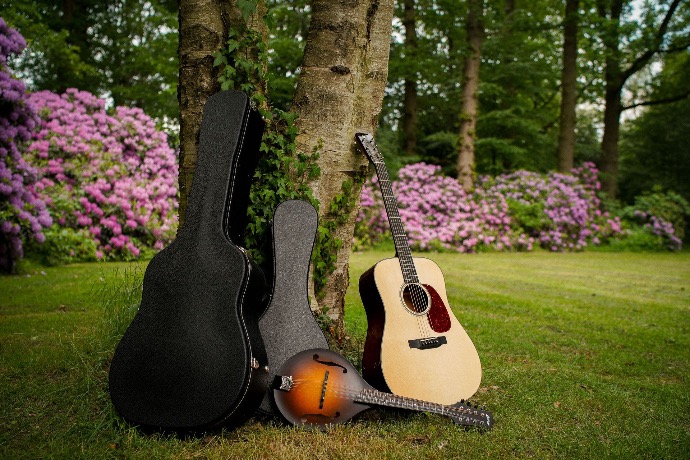
Benchtalk #4 |
The Legend of Bill Collings & Collings Guitars
Kies een levendige afbeelding en schrijf er een inspirerende paragraaf over.
Het hoeft niet lang te zijn, maar het moet je afbeelding versterken.
